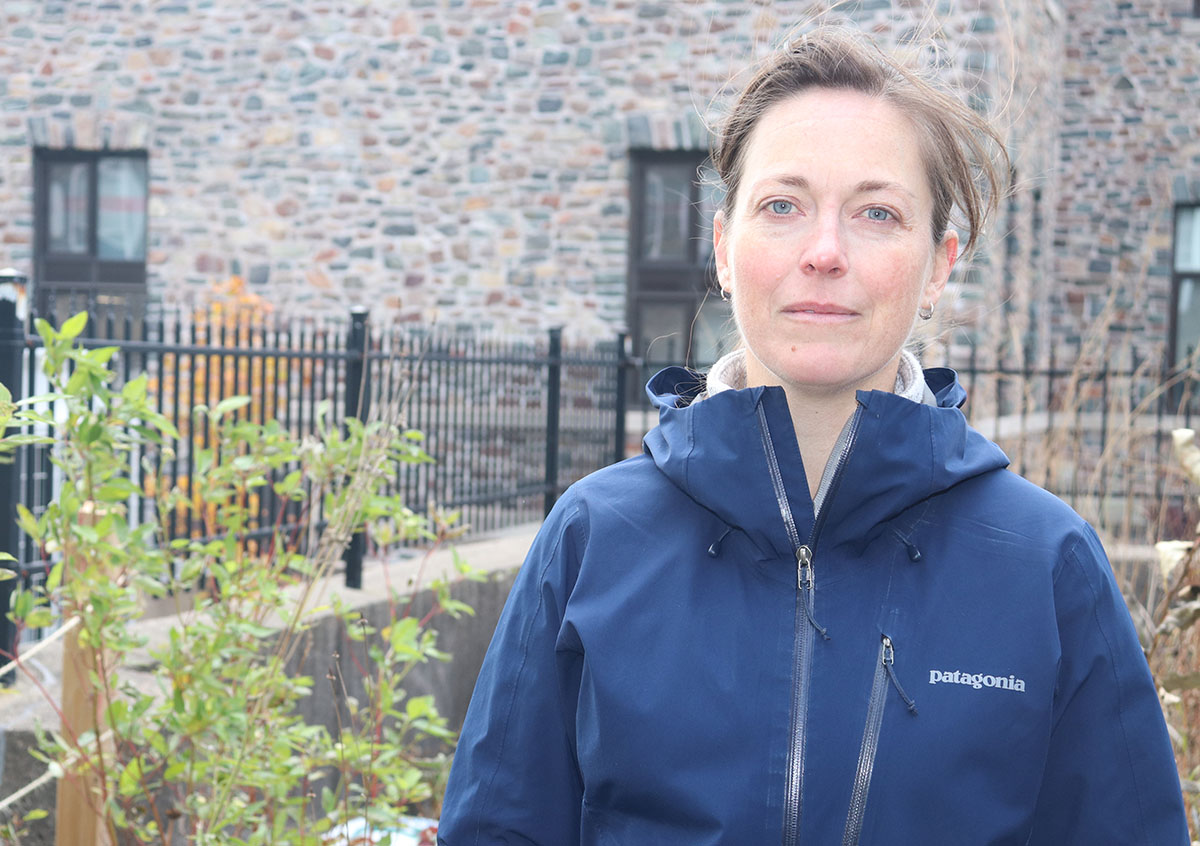Fast-tracked development in Bedford raises environmental concerns
Environment advocates say proposed development threatens an ecologically important path for wildlife

caption
Ecology Action Centre's Karen McKendry: “In a city, it's harder for [species] to spread, walk, fly, or populate across hard surfaces like driveways.”A fast-tracked housing development in Bedford could allow a critical wildlife passageway near Blue Mountain Birch Cove Lakes wilderness area to be bulldozed.
“If the Chebucto peninsula animals [and] plants can’t interbreed with the mainland, then they will eventually fade away or die off,” said Karen Robinson, co-chair of the Sandy Lake-Sackville River Regional Park Coalition.
The province assumed authority in 2022 to fast-track approval of nine housing developments in Halifax, including a Bedford subdivision of more than 1,000 homes near the intersection of Hammonds Plains Road and Larry Uteck Boulevard.
Heather Fairbairn, a spokesperson for the Department of Municipal Affairs and Housing, said these projects bypass regional council and are approved by a provincially designated executive panel. Municipal staff still plan the projects and subject them to usual studies and permitting.
The Halifax regional municipality’s executive panel on housing approved the development plan on Tuesday.
Robinson and other environmental advocates have criticized the plan’s disregard of wildlife passageways.
Karen McKendry, senior wilderness outreach co-ordinator for the Ecology Action Centre, said developers could bulldoze a 100-metre tract of wilderness that is allowing wildlife to travel between Blue Mountain Birch Cove Lakes wilderness area and Sandy Lake Park.
“In a city, it’s harder for [species] to spread, walk, fly, or populate across hard surfaces like driveways,” said McKendry.
Richard leBrasseur, director of the Green Infrastructure Performance Lab at Dalhousie University, is concerned about the potential survival of amphibians such as salamanders and reptiles such as snakes. The eastern ribbon snake is a threatened species in Nova Scotia.
“[Salamanders] are under rocks, they are under deadwood … they’re also incredibly sensitive,” says leBrasseur.
Robinson is also worried about how the development could affect salmon.
“We now have wild Atlantic salmon back in Sandy Lake. That’s thanks to the 35 years of work of Walter Regan’s organization,” said Robinson, referring to her colleague Regan, a previous member of the Sackville Rivers Association.
Robinson said the development will increase road salt and debris in nearby waterways that are connected to Sandy Lake through a network of rivers and streams.
“[If] they change the temperature and the pollution levels in Sandy Lake by developing, then the salmon will go again because they can’t stay in a place unless it has particular qualities,” Robinson said.
Halifax planners have collected public feedback for the Halifax Green Network Plan to determine how best to grow the municipality while protecting important ecosystems. The environmental plan, which provides land management and community design direction for ecologically important areas , was enshrined in Halifax’s planning recommendations by Halifax regional council in October 2018.
October 2022 updates to the plan include consideration of wildlife corridors. The Bedford development is the first of the nine development plans that must consider Halifax Green Network wildlife passageway mapping.
Concern over lack of attention to passageways in planning stages
The Halifax Green Network Plan declares that “the protection of environmental or cultural features of significance on the lands is considered, including wildlife corridors” such as Bedford’s 100-metre passageway.
McKendry argues the wording of “consider” doesn’t give planners the authority to protect wildlife passageways.
Robinson was “stunned” to see no mention of protecting the 100-metre passageway at the development’s public consultation meeting last August. HRM planners only mentioned the municipality’s required 30-metre setback between development and waterways or wetlands.
Retired Dalhousie University biology professor David Patriquin argues larger forested setbacks around the wetlands can hold water, protecting the development from flooding.
“Until we had these extreme rains, we didn’t really appreciate how much these wetlands protect us,” says Patriquin, referencing the municipality’s floods last July.
Bedford city councillor Tim Outhit said he hadn’t expected the planning requirements to be so controversial.
“[The buffer] was 20 metres, [and now] we’ve increased it to 30 metres, which should have made advocates a little happier and … developers a little bit happier,” said Outhit.
Dali Salih, the Halifax regional planner assigned to the development, did not respond to interview requests.
The province’s Municipal Affairs and Housing Department stated via email that “[fast-tracked developments] remov[e] barriers and will help thousands of people, at all income levels, access housing faster.”
McKendry said concerns the Sandy Lake-Sackville River Regional Park Coalition has are not anti-development.
“No one in our group is against housing,” says McKendry, adding that her concern is how the development “impacts the environment.”

